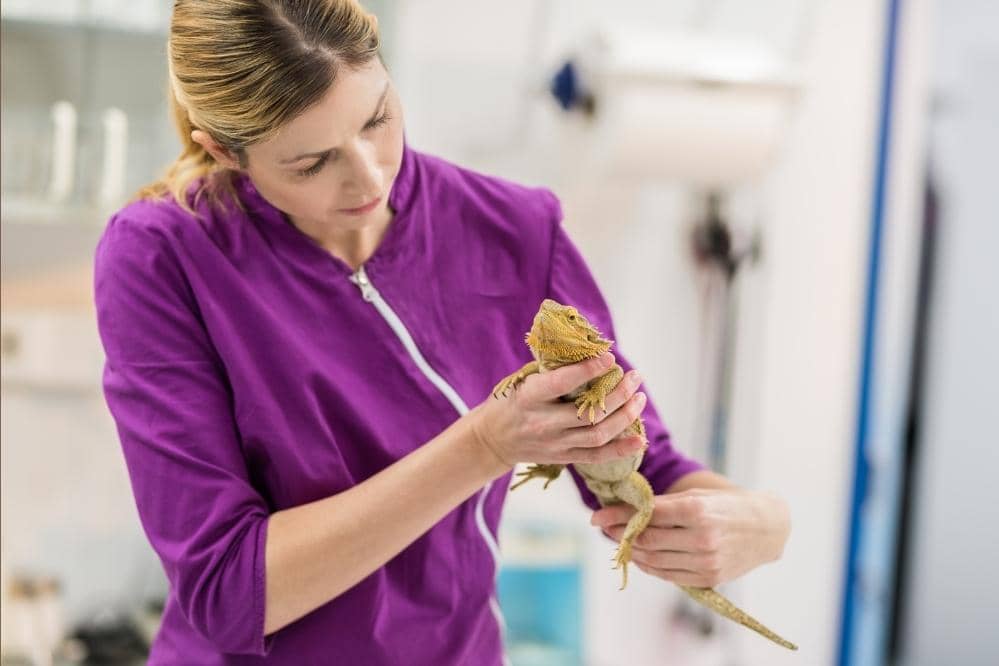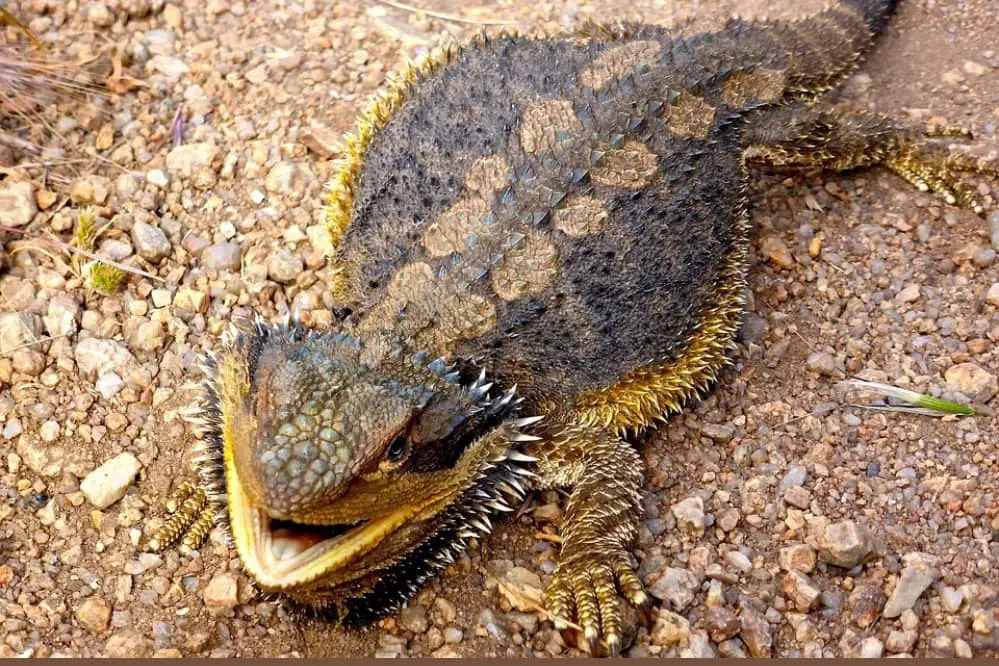The body of a bearded dragon will flatten out in response to a variety of stimuli, including fear, stress, inappropriate body temperature, and disease. This behavior is natural for dragons (whether in the wild or captivity), and the dragon will not suffer any negative effects because of it. However, the most important thing to comprehend is that, unlike dogs and cats (who flatten and expose their belly in front of their owners to show that they trust or love their owners), flattening out is not a sign of trust in the case of bearded dragons.; rather, it is indicative of stress.
The appearance of your bearded dragon engaging in such activity could make you feel anxious, but in most cases, the underlying cause is nothing to worry about. It is one of the most common body postures among bearded dragons.
Bearded dragons are capable of displaying a wide variety of different body languages or behavior, in addition to the capacity to flatten themselves out. This involves moving their arms in different directions, bobbling their heads, bulging their eyes, and even changing color.
Reasons Why Bearded Dragons Flatten Out
Here are 4 reasons behind your beardie flattening out.
1. To Increase The Body Temperature
Most of the time, a Bearded Dragon flattens its body to regulate and, in the end, raises its body temperature. Bearded Dragons are “exothermic,” which means they need heat from the outside to keep their body temperature at the right level and do important things like digesting food. If a Bearded Dragon can’t get its body temperature up to the correct level, it will have trouble digesting food. This can cause different kinds of problems, like gut rot, where the food rots in the dragon’s stomach without being broken down.
A Bearded Dragon will also get lethargic and sluggish without proper exposure to a high-quality heat source throughout the day. Because of these factors, your Bearded Dragon may exhibit some fascinating and unusual behaviors, such as flattening its body, in order to maintain a healthy body temperature and to maintain its health. The objective of flattening their bodies is to increase the surface area of their bodies exposed to the heat source to absorb the maximum heat, thus attaining the desired body temperature more easily.
2. Flattening As A Response To Sickness
Bearded dragons can also flatten out their bodies when they are sick. When a bearded dragon is sick, it may not eat as much as they should. So their empty stomachs can look much flatter than usual. Beardies that are sick will also become lethargic and may lie still for long periods.

Calcium deficiency can also make your bearded friend flatten its body. A bearded dragon will also lie flat if it doesn’t get enough calcium. If the right calcium supplements aren’t given in the diet, it can turn into metabolic bone disease. This disease is thought to be painful and incurable and will eventually kill your bearded reptile.
Though bearded dragons in captivity rarely get sick because they get the right food and live in a good environment, you need to immediately consult a veterinarian if you observe that your bearded dragon is lying flat for extended periods, lethargic and is not eating normally.
3. Due To The Incorrect Tank Temperature
If you notice that your bearded dragon is stretching out its body during the day at sporadic intervals while it is contained in its tank, there is a possibility that the temperature is too low.
If your dragon’s beard and possibly its entire body starts to turn black, this is another tell tale sign that the temperature in its tank is too low. It’s possible that this isn’t always the case, but it’s definitely something to keep an eye out for.

Have a look at the table below, and make use of it as a guide when attempting to provide the appropriate temperatures that your Bearded Dragon requires. If you are unsure about anything, you should always consult your veterinarian.
| Temperature Guide for Bearded Dragons |
| Cool Spot 75°-80°F (24 – 26 0C) |
| Basking Area 95°-100°F (35 – 38 0C) |
| Night 70°-75°F (21 – 24 0C) |
As the owner, you need to do what you can to make sure the temperatures are always correct. Using a contactless digital thermometer is the only practical way to assure that you have the correct temperatures in the tank, as dial thermometers are sometimes imprecise and result in tank temperatures that are significantly off. Additionally, it would be best if you had a high-quality thermostat that regulates the temperature at all times without the need for manual adjustments.
4. Bearded Dragons Can Flatten Out Due To Fear
When a Bearded Dragon feels frightened or intimidated, it can respond in a number of different ways. When faced by a larger animal, Bearded Dragons typically prefer to run and hide. However, this is not always possible; thus, Bearded Dragons have additional tricks or behaviors to thwart potential predators.
The most prevalent of these behaviors is to puff up their beard and turn it black in order to appear larger and more threatening to any predator contemplating an attack.
Final Remarks
It is perfectly typical for bearded dragons to flatten down when they are frightened, feeling cold, or ill. Maintaining a calm environment, providing them with a warm enclosure, and ensuring they consume a healthy diet will significantly reduce this behavior. Remember that it is also natural for them to flatten their bodies in the morning as they warm up from the chilly temperature of the night. Whatever the case may be, if your bearded reptile remains in a flat position for too long, you need to contact your vet immediately. With proper care and bonding, your bearded dragon will have a long and healthy life for many years.

